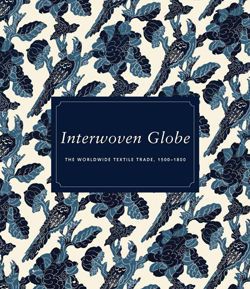Length of bizarre silk
Not on view
The term "bizarre silk" was popularized with the publication of Vilhelm Slomann’s Bizarre Designs in Silks (1953). Slomann’s theory that these woven silks were designed, and is some cases produced, in India was quickly refuted, but the term has stuck.[1] The precise origin for this distinctive style of silk produced in Europe between about 1690 and 1720 has not been established; a number of cultures clearly contributed to the creation of these patterns. Certain relationships have been drawn: for example, an integration of Japanese design concepts such as the abstraction of motifs and a discrepancy of scale has been suggested as a primary influence.[2] In this panel the influence of Ottoman sixteenth- and seventeenth-century design is apparent in the meandering pattern and the layering of motifs, as well as in their large scale. Like many European bizarre silks, the motifs in this panel have become so stylized that they defy identification.
The high quality of this particular example and others of the type suggests that these textiles were made in well-established European weaving centers, such as Lyon or Tours in France, in Venice, or in other Italian or Spanish textile-producing cities. A small number of them have been associated with the Spitalfields weaving center (now in the East End of London) on the basis of the extant design drawings by several early eighteenth-century English designers.[3] The Dutch are known to have had a significant silk-weaving industry as well (see MMA 1976.12), and some Dutch examples of bizarre silk from the early eighteenth century have been identified.[4]
There are few complete garments surviving from the turn of the eighteenth century, but a rare unaltered bizarre silk mantua is at the Metropolitan Museum (see MMA 1991.6.1a,b). Mantuas of this period were relatively unstructured women’s gowns that took most of their shape from draping and pinning on the body. The expanse of fabric from the shoulder to the train created an ideal showcase for such luxurious textiles with large patterns.Very few bizarre silks seem to have been used for interior decoration, though vegetal motifs similar to those seen on the dress silks found their way to embroidered furnishings (see MMA 53.32.1a-d and 53.32.2a-d).
[Melinda Watt, adapted from Interwoven Globe, The Worldwide Textile Trade, 1500-1800/ edited by Amelia Peck; New York: Metropolitan Museum of Art; New Haven: distributed by Yale University Press, 2013]
Footnotes:
1. Slomann, Bizarre Designs in Silks, pp. vii–ix. See also the Burlington Magazine review, rebuttal, and response in Irwin, Review of Bizarre Designs in Silks, pp. 153–54, and Slomann and Irwin, "Letter: Bizarre Designs in Silks," pp. 322, 324–25. For the largest single collection of these silks to be published recently, see Ackermann et al., Seidengewebe des 18. Jahrhunderts. A panel of the same design as catalogue number 43 is in the Museum of Fine Arts, Boston (no. 1977.179).
2. See Miller, "Europe Looks East," pp. 155–73, 211–24.
3. For a discussion of these rare early silk designs and the English industry, particularly the work of James Leman, see Natalie Rothstein, Silk Designs of the Eighteenth Century, esp. pp. 37–40, 65–78.
4. See Colenbrander and Browne, "Indiennes: Chinoiserie Silks Woven in Amsterdam," pp. 131–33, figs. 70–72. 5. Mantua and matching petticoat, British (French textile), ca. 1708; silk, metal thread (acc. no. 1991.6.1a,b). See Majer, "Costume Institute; Mantua and Petticoat," p. 54.
This image cannot be enlarged, viewed at full screen, or downloaded.
This artwork is meant to be viewed from right to left. Scroll left to view more.





